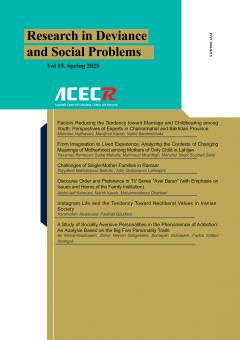-
-
-
Open Access Article
1 - Youths and Escape Experience in Urban Spaces
Fardin Alikhah -
Open Access Article
2 - The AbortionDue to the Mother's Hardship, in the "Family and Youth of the Population's Protection" Act
Sadegh Shariati Nasab -
Open Access Article
3 - Factors Related To the Tendency of Young People to Be Single (Case Study: Hamadan Province)
Saeed KiyanPour Amirali Farhang Mohsen Hajian -
Open Access Article
4 - The Shift Toward Celebrities: A Sociological Study of the Change in Cultural Authority Among Youth
Maede Khayeri Zahra Maher -
Open Access Article
5 - Qualitative Study on Self-Care Among Youth in Tehran
Mitra Sarabian Parvin Savadian alireza kaldi -
Open Access Article
6 - A study of interpersonal violence among the youth of Fars province with emphasis on individual and social components
maryam soroush sedighe alborzi
List of Articles youth
-
The rights to this website are owned by the Raimag Press Management System.
Copyright © 2017-2025

